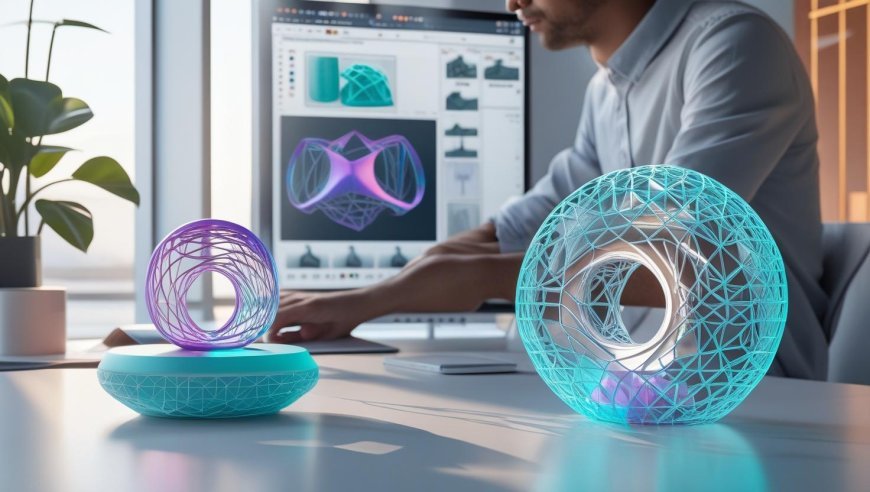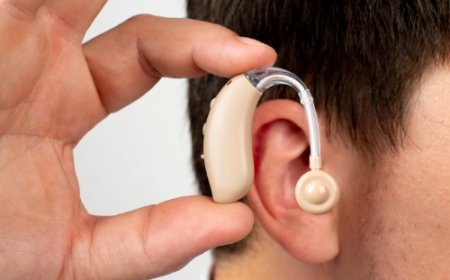From Concept to Reality: The Rise of Generative AI in Product Design

Generative AI is quickly becoming a game-changer in product design. According to a McKinsey report, AI could boost global GDP by $13 trillion by 2030, with industries such as design, manufacturing, and technology standing to benefit significantly. Specifically, Generative AI is transforming how products—from consumer goods to industrial machinery—are conceptualized, prototyped, and manufactured.
For years, product design relied heavily on human intuition, creativity, and iterative processes. Today, Generative AI is altering this paradigm by automating the creation of innovative designs, improving efficiency, and reducing development cycles. Whether in fashion, automotive, or industrial design, generative tools help designers explore a broader range of possibilities faster than ever before.
This article examines how Generative AI is changing the product design process, its impact on various industries, and how businesses can leverage custom generative AI solutions to create the next generation of products.
What is Generative AI?
Generative AI refers to a subset of artificial intelligence that can create new content based on learned patterns from existing data. Unlike traditional AI models, which typically classify or predict data, generative models can generate new designs, images, music, text, and even 3D objects.
In product design, Generative AI tools work by taking a set of parameters or guidelines and producing multiple design alternatives that fit those criteria. These models can incorporate aesthetic preferences, material constraints, and functional requirements into the design process.
Key Characteristics of Generative AI:
-
Data-driven creation: Generates designs based on existing datasets.
-
Adaptability: Adjusts based on design feedback or changing parameters.
-
Innovation: Offers solutions that may not be immediately obvious to human designers.
The Evolution of Product Design
Product design has traditionally followed a structured, linear approach:
-
Conceptualization: Brainstorming and sketching ideas.
-
Prototyping: Building early versions of the product.
-
Testing: Validating and refining the product.
-
Finalization: Preparing the design for production.
In the past, designers often had to manually test various combinations and concepts, which was time-consuming and resource-intensive. However, as AI technology evolved, generative models began to take on more complex tasks, resulting in the following shifts:
-
Faster iterations: AI-driven tools allow designers to quickly explore multiple design variations.
-
More efficient prototyping: Generative AI can create 3D models and blueprints, reducing the need for physical prototypes.
-
Personalization: AI systems can customize designs based on specific user preferences or needs.
Today, many Generative AI Development Companies offer tailored solutions that integrate seamlessly into product design workflows, enabling faster product iterations and personalized designs.
How Generative AI Transforms Product Design
Generative AI can be applied at multiple stages of product design, from conceptualization to final production. Below are some of the key ways in which AI is reshaping the design process:
1. Conceptualization and Ideation
One of the most significant ways Generative AI impacts product design is through ideation. AI tools can generate multiple design concepts in seconds based on specific input criteria. These AI-generated ideas can serve as a springboard for human designers to refine and iterate upon.
Example:
A Generative AI system might take user preferences, material constraints, and aesthetic goals and produce a variety of furniture designs. The designer can then choose the most promising options for further development.
2. Optimization of Design Parameters
Once a product concept is chosen, generative AI tools can optimize the design for various performance parameters, such as weight, strength, and durability. The AI models can simulate real-world conditions (e.g., stress tests, temperature variations) to ensure the design is both functional and manufacturable.
Example:
In automotive design, Generative AI solutions can optimize vehicle components for aerodynamics and safety, resulting in a lighter, more fuel-efficient car without compromising on performance.
3. Customization and Personalization
AI can also enable the customization of designs. Whether for mass-market products or niche designs, generative models can tailor products to individual customer preferences. The AI can learn from user input and adjust designs based on features like color, shape, size, and material.
Example:
Fashion brands are increasingly using Generative AI to design personalized clothing collections based on individual consumer preferences. The AI learns from data and produces customized apparel that aligns with a person’s style.
4. 3D Model Generation and Prototyping
Instead of relying on traditional CAD (Computer-Aided Design) systems, generative AI tools can directly produce 3D models of products based on specific design inputs. These models can then be used to create physical prototypes using 3D printing or other rapid prototyping techniques.
Example:
Generative AI development companies are now using AI to create complex, organic-shaped products—such as medical implants or architectural components—by optimizing for strength and minimal material usage.
Industries Benefiting from Generative AI in Product Design
Generative AI has found applications in a wide range of industries. Below are some key sectors benefiting from these advances:
1. Automotive Industry
Generative AI is used to design car components that are both lightweight and durable. AI models can analyze different material combinations and stress-test designs to improve vehicle performance and safety features.
|
Application |
Generative AI Benefits |
|
Car body design |
Lighter, more aerodynamic shapes |
|
Engine components |
Improved performance, reduced weight |
|
Structural reinforcement |
Optimized for safety and durability |
2. Fashion and Apparel
In the fashion industry, Generative AI tools are being employed to create unique clothing designs, predict trends, and even generate entire collections based on consumer data.
Example:
AI-powered tools can create designs based on seasonal trends, body types, and even fabric sustainability.
3. Architecture and Construction
Generative design is revolutionizing the way architects approach building layouts. AI models can suggest layouts that maximize space, energy efficiency, and cost-effectiveness, all while meeting aesthetic and functional requirements.
Example:
Generative AI has been used to create environmentally friendly and energy-efficient building designs. AI helps optimize structural layouts while minimizing resource use.
4. Consumer Electronics
AI is used to design smaller, more efficient components for smartphones, laptops, and wearable devices. Generative AI solutions help in the optimization of circuit boards, battery life, and screen layouts.
Challenges and Considerations
While the benefits of generative AI in product design are clear, there are several challenges and considerations that companies must address:
1. Data Dependency
Generative AI models require vast amounts of data to train. The quality of the generated design depends heavily on the data fed into the model. Companies need to ensure that their datasets are comprehensive, diverse, and high-quality.
2. Ethical Considerations
Generative AI can potentially automate jobs that were traditionally handled by human designers. It’s crucial to consider the ethical implications of replacing human labor with AI, especially in industries where craftsmanship and creativity are highly valued.
3. Integration with Existing Design Tools
Integrating Generative AI solutions into existing product design workflows can be challenging. Traditional tools may not support AI-generated designs out-of-the-box, requiring significant adjustments or new software development.
4. Intellectual Property Issues
As AI systems generate unique designs, the question arises: who owns the rights to these creations? Companies need to address intellectual property concerns surrounding AI-generated products.
Future Outlook: The Role of Custom Generative AI Solutions
As AI technology continues to evolve, custom generative AI solutions will become more refined and accessible to businesses of all sizes. Companies that specialize in AI development will continue to build more advanced tools tailored to specific industries, ensuring that businesses can achieve highly customized product designs.
The future of product design lies in collaboration between human creativity and AI-driven capabilities. Generative AI won’t replace designers but will complement their skills, making the design process more efficient, innovative, and personalized.
Conclusion
Generative AI is no longer just a concept—it's a tool that's transforming the world of product design. Whether optimizing manufacturing processes, creating personalized designs, or enhancing performance, Generative AI has the potential to reshape industries across the board.
For businesses, adopting custom generative AI solutions can lead to faster development cycles, better products, and more satisfied customers. As Generative AI Development Companies continue to innovate, the boundaries of what’s possible in product design will expand, creating a new era of efficiency and creativity.
What's Your Reaction?



























































